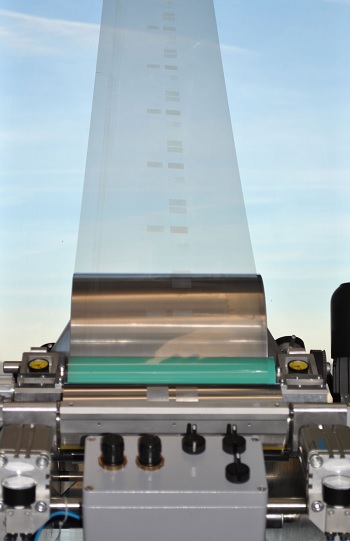Researchers from Fraunhofer IBMT have worked in conjunction with SAUERESSIG to design a new system which can print protein patterns on a film using a roll-to-roll method thus ensuring the cost-effective and efficient manufacture of biological cells in high volumes.
 © Fraunhofer IBMT
© Fraunhofer IBMT
Biological cells, which are the smallest living units of an organism, have been incorporated into biosensors over the past few years for applications in various fields such as environmental analysis, drug development or diagnostics.
The artificial cultivation of natural cells in laboratories is a difficult process due to the effect of the foreign environment on their behaviour and shape. As a result, artificially created cell cultures prove ineffective for experimental analysis.
Protein-coated substrates are efficient when addressing this limitation as using a more natural environment stimulates cell growth.
In general, all methods of producing protein-coated dishes have their own disadvantages. For example, a spin coating method wastes a considerable amount of liquid protein when placed on the substrate.
Microcontact printing can print of fine protein structures at the micrometre scale on to substrates, enabling the efficient generation of fine cellular structures. However, this technology is expensive and labour-intensive.
Fraunhofer scientists are working to create a roll-to-roll printing plant method which directly applies microstructured protein patterns onto the large-area substrates. This ‘newspaper printing’ style method is effective for the rapid and inexpensive processing of large surface areas.
The substrate is initially wound over a roll, with an empty roll on its opposite side. The printing process is carried out between the two rolls whereby the substrate gets wound over the empty roll on the opposite end.
However, this process does not use standard ink added with a solvent as this would destroy the proteins. In order to address this problem, the IBMT researchers created a new specialised protein ink. The researchers have successfully cultivated different kinds of cells over the first substrates coated with the new system.
In addition, the demonstrator production plant is now ready to start the development of the printing processes based on the needs of customer. Currently, the width of the film substrates is set to be 30cm, with the smallest printable structures in the range of 10 to 20µm.
In the long term, this will make it possible to produce complete biosensors by printing.
Dr. Thomas Velten, Fraunhofer Institute for Biomedical Engineering
The team is planning to print conductive structures with the help of the roll-to-roll process in order to combine these structures with the protein patterns.